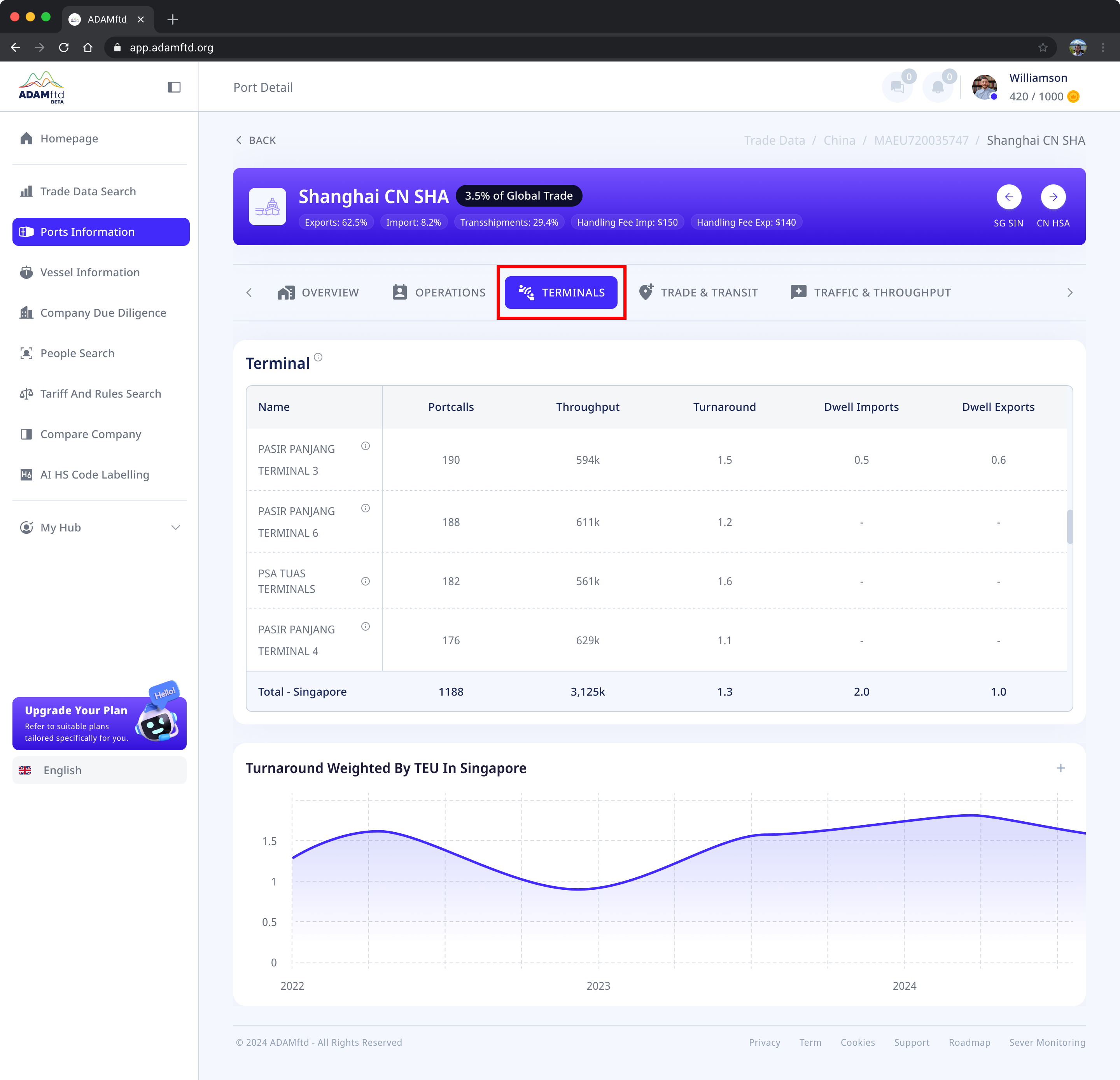This data is invaluable for logistics professionals, shipping companies, and businesses seeking to optimize their supply chain strategies. By analyzing terminal-specific metrics such as throughput, turnaround times, and dwell times, users can identify the most efficient terminals for their shipping needs.
This article explains the key components of the Terminals feature and demonstrates how it can help streamline port operations and decision-making.

1. Terminal Overview
- A comprehensive table listing all terminals at a selected port, detailing:
- Name: The terminal’s name for identification.
- Port calls: Number of vessels serviced by the terminal.
- Throughput: Total volume of goods handled, measured in TEUs (Twenty-Foot Equivalent Units).
- Turnaround time: Average time taken for a vessel to be serviced at the terminal.
- Dwell imports: Average time imported goods remain in the terminal before being moved out.
- Dwell exports: Average time export goods remain in the terminal before being loaded onto vessels.
Importance
- Provides a detailed breakdown of terminal activities, helping users assess terminal efficiency.
- Enables businesses to select terminals best suited to their operational needs based on performance metrics.
2. Total Port Metrics
- Aggregated metrics for all terminals in the port:
- Total port calls.
- Total throughput.
- Average turnaround time.
- Overall dwell times for imports and exports.
Importance
- Offers a macro-level view of port-wide operations, combining data from all terminals.
- Helps users evaluate the overall performance of the port in addition to individual terminals.
3. Turnaround Time Analysis
- A visual representation of turnaround times weighted by TEU volume over a specific time period.
- Historical trends showing fluctuations in average turnaround times.
Importance
- Provides insights into operational efficiency over time, highlighting periods of congestion or improvement.
- Helps users plan shipments and avoid delays during high-traffic periods.
4. Key Use Cases
For Logistics Professionals
- Identify the most efficient terminals for handling specific cargo.
- Optimize shipping schedules by choosing terminals with faster turnaround times.
For Shipping Companies
- Analyze dwell times to improve storage and transit planning.
- Assess terminal throughput to evaluate capacity for handling large shipments.
For Businesses
- Gain insights into terminal efficiency to select the best trade routes.
- Monitor performance trends to adapt supply chain strategies proactively.
5. Benefits of Terminal-Level Insights
- Enhanced Planning: Terminal-specific data enables precise planning for shipments, reducing delays and costs.
- Informed Decision-Making: Visibility into throughput and turnaround times helps businesses choose the most reliable terminals.
- Operational Optimization: Insights into dwell times allow companies to streamline storage and cargo movement.